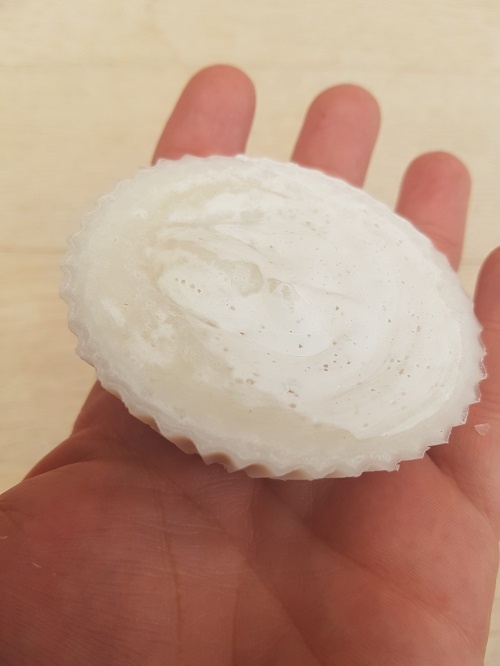If you want to live as extremely cheaply as possible, you may want to consider making your own soap out of ash, rainwater, and grease that is left from cooking.
It is believed that soap has been made like this for thousands of years, so this is also a fun and educational project with big kids.
Is this a luxurious soap?
No, not really. It does not smell so good and gets a slightly dull color.
If you feel like it, you can color it with, for example, a little coffee, turmeric, or cocoa. Most other plant dyes will become dull as the chemical reaction affects them. You can also add scent to your soap batter just before it is poured into the mold. Many essential oils disappear easily in the alkaline mass, and many drops have to be used. Extracts of, e.g., flowers can not be used at all.
A little about the ingredients for free homemade soap
- The ash must be from hardwood (otherwise, it will contain too much resin). It can be charcoal from e.g., barbecue.
- Rainwater or other soft water types, do not use tap water as it may contain some calcium.
- Melted fat from meat cleaned by, for example, heating it and straining it. It does not matter if the meat has been seasoned, for example
Tips and important precautions for soap making
Lye is corrosive. We, therefore, use safety equipment in soap making and if you have not already, please read the soping safely page.
This soap can be used for practically everything. Cleaning, washing dishes, hair, body, and hands. You can also wash clothes in it, and should it be with a washing machine, you can use the recipe homemade washing powder.
The soap is soft and the longer you let it rest after manufacture the better. It will probably be able to last for several years if stored dark and dry.
Do not put the soap in a plastic bag or another tight-fitting container, but leave it in a paper bag where it can get rid of moisture.
During manufacture, know that you must not use aluminum utensils. They can be damaged by the corrosive lye.
How to make soap with ash lye. Recipe
Soap made from lard and rainwater, saponified with ash
Equipment
- Bucket or bowl
- Pot (not aluminum)
- Spoon of wood or plastic
- Hob or other heat resource
- Mold for casting the soap in
- Safety equipment and litmus paper
- Sieve
Materials
- Ash
- Rainwater
- Lard/fats leftover from cooking
- 1 potato or egg
- Sea salt 1 tsp for each cup lard
Instructions
- Sieve the ash, so it has the consistency of sand
- Stir the ash thoroughly in enough water to make it liquid. Let it stand for a few days
- Once the ash has fallen to the bottom and the top is transparent filter the mass so that the ash is separated. For example, through an old sheet. You now have your lye
- Boil the lye until it can carry a potato or an egg (at least 1/3 of the egg is above the lye)
- Melt your lard by heating it as little as possible
- Add lye in the ratio 0.4 parts lye to 1 part fat. The two liquids must have approximately the same temperature
- Add seasalt and stir
- Stir and heat on low heat on the mass for about 10 minutes. After this, the mass should only be kept warm, not further heated
- Stir in the pan until a trace appears on the surface when you stir. If necessary, use a stick blender. It can take anywhere from ten minutes to several hours
- Pour the mass into a mold and let it sit for about a day and check if it is firm enough to take out of the mold
- Cut the soap into prefered size
- Let the soap rest for 4-6 weeks before using it – test with pH stripe before use, and make sure it is pH 10 or less
Will it be a delicious soap?
No, not really. It does not smell very nice, and gets a slightly dull color.
If you feel like it, you can color it with, for example, a little coffee, turmeric, or cocoa. Most other plant dyes will become dull as the chemical reaction affects them. You can also give your soap batter scent, just before it is poured into the mold.
We hope you have fun!





